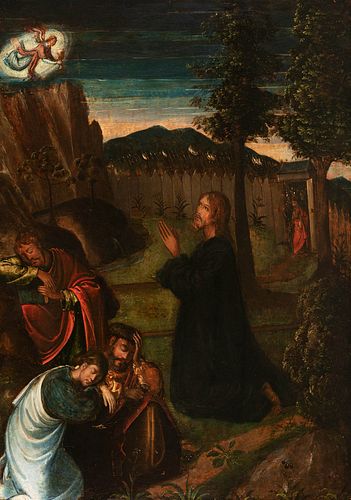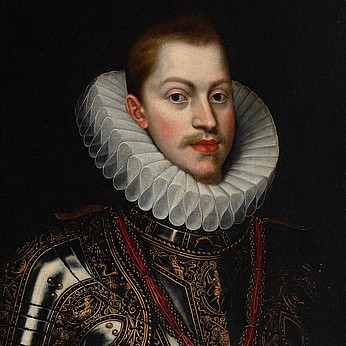Hispano-Flemish school; first third of the 16th century. "Prayer in the Garden". Oil on panel.
Lot 28
About Seller
Setdart Auction House
Carrer Aragó 346
Barcelona
Spain
Setdart Subastas was born in 2004 and is currently the first online art auction in Spain with solidity, prestige and reliability guaranteed by our more than 60,000 users. Setdart has a young, dynamic and enterprising team ready to successfully manage the purchase and sale of art works through custom...Read more
Estimate:
EUR€2,000 - EUR€2,500
$2,083.33 - $2,604.17
Absentee vs Live bid
Two ways to bid:
- Leave a max absentee bid and the platform will bid on your behalf up to your maximum bid during the live auction.
- Bid live during the auction and your bids will be submitted real-time to the auctioneer.
Bid Increments
| Price | Bid Increment |
|---|---|
| EUR€0 | EUR€10 |
| EUR€200 | EUR€25 |
| EUR€500 | EUR€50 |
| EUR€1,000 | EUR€100 |
| EUR€3,000 | EUR€200 |
| EUR€5,000 | EUR€500 |
| EUR€10,000 | EUR€1,000 |
| EUR€20,000 | EUR€2,000 |
| EUR€50,000 | EUR€5,000 |
About Auction
By Setdart Auction House
Nov 24, 2021
Set Reminder
2021-11-24 09:00:00
2021-11-24 09:00:00
America/New_York
Bidsquare
Bidsquare : Old Masters, Day 1
https://www.bidsquare.com/auctions/setdart-auction-house/old-masters-day-1-7873
Setdart Auction House sofia@setdart.com
Setdart Auction House sofia@setdart.com
- Lot Description
Hispano-Flemish school; first third of the 16th century. "Prayer in the Garden". Oil on panel. Presents repainting, restorations and frame of the nineteenth century. Measurements: 67 x 49 cm; 90 x 71 cm (frame). This devotional painting represents Jesus in the Garden of Olives at the moment when the angel comforts him, while his disciples Peter, John and James sleep beside him (Matthew: ch. 26 v. 37; Mark: ch. 14 v. 33). The Gospels narrate that, distressed by a strange sadness, Jesus went to pray on the Mount of Olives, where the apostles followed him. Once there, Jesus withdraws to one side to pray, the moment of the crucifixion becoming present to him. Thus, this episode begins the bloody Passion in the soul of Christ. The apostles fall into a deep sleep, and an angel appears to Jesus to comfort him. In fact, this episode alludes to the greatest temptation of Jesus' life, the last of all: knowing his destiny, he can either flee from his enemies or continue to fulfill his divine mission, risking his life. The Hispano-Flemish school was characterized by the great influence of the Flemish primitives, which survived in Spain for a long time, largely due to the political and cultural ties between the two countries. Flemish painting was, in the 15th century, the most advanced in Europe, and influenced all national schools, including Italian. It was considered an art of enormous refinement, with works executed and treated as jewels. This consideration was also due to the very rich materials used in its execution, as well as the assemblies of the panels, which, as we see here, were of great richness. The features of the Hispano-Flemish school are close to those of Flemish painting, starting with the greatest concern of the painters of Flanders, the search for reality above all else. In relation to this desire, enormous attention is paid to the qualities of the objects, as well as to the smallest details, often endowed with a symbolic charge. The iconography continues to be mainly religious, and in the scenes a correct and precise, very meticulous drawing will predominate. In the same way, they try to capture the truest possible illumination, whether artificial or natural, always modeling the flesh tones and producing chiaroscuro to a greater or lesser degree.
- Shipping Info
-
In-house shipping available. Please inquire at admin@setdart.com.
-
- Buyer's Premium



 EUR
EUR CAD
CAD AUD
AUD GBP
GBP MXN
MXN HKD
HKD CNY
CNY MYR
MYR SEK
SEK SGD
SGD CHF
CHF THB
THB














